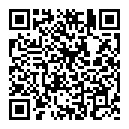外国语学院“外语教学激励促改工程”之:语言人文活动系列讲座 (第2期)
外国语学院“外语教学激励促改工程”之:语言人文活动系列讲座 (第2期)
Voyaging across Borders with Sun Wukong and Queequeg
与孙悟空和魁魁格一同踏上跨国界之旅
Professor Walter Hesford University of Idaho
沃特.赫斯佛德 爱达荷大学
Native Americans call those who walk between traditional tribal culture and Euro-American culture “Two-World Travelers.” Such travelers teach us how to cross cultural borders without losing our identity. Sun Wukong, dear Monkey King, and Queequeg, the chief harpoon in Herman Melville’s Moby- Dick are also border-crossing teachers. As represented in Wu Chen’en 16th century novel The Journey to the West, ever-curious Monkey, as he sails from cave to paradise, from central China to India, from mountain imprisonment to freedom and service, captures and frees our imagination. In Melville’s nineteenth-century novel, Queequeg, a tattooed cannibal from the South Seas islands, befriends young Ishmael, the novel’s narrator, challenging and expanding Ishmael’s white Christian world-view. Queegueq teaches him and us how to be warm-hearted, cross-cultural, cosmic voyagers. As readers and teachers, translators and scholars, we too are two-or-more-world travelers, voyaging across borders.
土著美国人将行走于传统部落文化和欧美文化之间的人称为“双世界旅行者。”这些旅行者教会我们如何在跨越文化边界的同时保持我们的身份。猴王孙悟空和赫尔曼·梅尔维尔《大白鲸》中的首席捕鲸人魁魁格亦是跨界宗师。16世纪时期,吴承恩的小说《西游记》描述了一只充满好奇心的猴子,他从山洞去往西天,从中国中部行走到印度,从五指山的压禁下获得自由并为唐僧服务,这些经历吸引并释放了我们的想象力。19世纪,在梅尔维尔的小说中, 魁魁格是一位来自南洋群岛的纹身食人者,他与年轻伊斯梅尔(本书的叙述者)结为好友,这挑战并开阔了伊斯梅尔的白人基督教世界观。 魁魁格教会伊斯梅尔以及我们如何成为热心的跨文化宇宙旅行者。无论是读者、教师,还是翻译工作者、学者,我们都是双世界或多世界旅行者,在进行着跨界旅行。
时间地点:2016.10.19 13:30-15:30 外院报告厅


